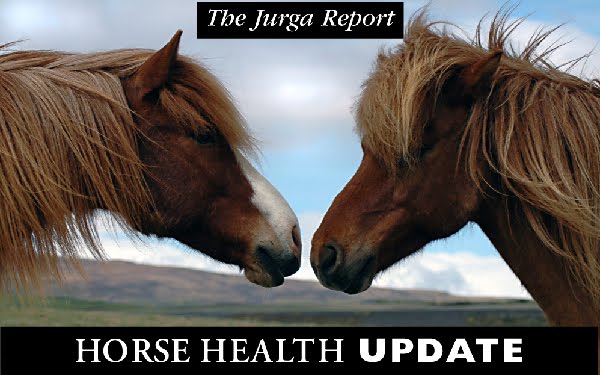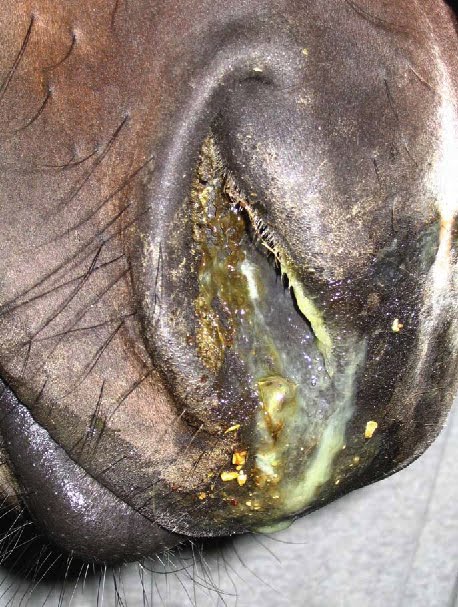by Fran Jurga | 13 October 2009 | The Jurga Report at Equisearch.com
As the thermometer dives, the whole horse world’s outlook changes. Everyone goes looking for clipper blades that aren’t rusty. They want their blankets mended…by next week. That hay order had better get here quick. And where are my gloves?

While most barns are very responsible about scheduling fall shots and checking into winter nutritional programs for horses coming off grass, there’s a little something to keep in the back of your mind. Something that has no vaccine but is a real risk to your horse.
This is the time of the year when horses are in heavy transit. There’s the mass migration to Florida (those lucky people and horses) and there are hundreds or even thousands of horses on the roads to and from Oklahoma for the year-end shows.
The most telltale sign of herpes virus is thick, yellow mucus. Do you have a plan to be able to isolate a sick horse from the other animals who share his stable or pasture?

It’s a simple equation: horses in motion + cold weather = risk of disease. And one that a vaccination won’t cover is the neurological form of Equine Herpes, which is now known as Equine herpesvirus myeloencephalopathy (EHM). There are actually nine forms of Equine Herpes, but people are usually concerned with three forms. EHM is a mutant strain of EHV-1.
The Wisconsin State Veterinarian, Dr. Robert Ehlenfeldt, has issued a special warning to horse owners in that northern state, but it makes plenty of sense, so I thought I would pass some of his points on to you so you could do what you can to protect your horse.
Equine herpes virus type 1, or EHV-1, usually causes a respiratory infection called rhino-pneumonitis. But it also has a more serious, often fatal, neurologic form that strikes the horse’s central nervous system.
A recent study by researchers at the University of Kentucky found that the neurologic form is increasingly prevalent. Historically, they found that only about three percent of EHV-1 cases were neurologic in the 1960s. But in the 1990s, over 14 percent were neurologic, and by 2006, more than 19 percent of EHV-1 cases were the more dangerous strain.
Staggering, standing with splayed legs and general incoordination are typical of the neurological form of Equine Herpes.

In 2006 an outbreak of this strain of the disease arrived in the United States with a shipment of horses from Germany; the horses scattered to eight states.
“Like a lot of viruses, this one thrives in cooler conditions, so we’re coming into EHV season,” Ehlenfeldt said. “There’s no vaccine for this form of the disease, so biosecurity is even more important.”
EHV-1 spreads when horses in close contact cough or sneeze, and on contaminated hands, water and feed. It can cause abortion in pregnant mares and death in foals. The neurologic strain may cause horses to be uncoordinated, unable to stand, and unable to eliminate urine and manure. They may also have swollen, inflamed legs and hemorrhages on their gums. EHV-1 vaccines are not effective against the neurologic form.
Some horses do stand with crossed legs while on cross-tied, but it is not normal for most horses in general stance. EHV’s neurological form may make it seem like the horse isn’t sure where his feet are.
Watch this blog for news about EHV outbreaks in different parts of the country (or notify me if you hear of one).
Special for readers for The Jurga Report: The USDA has pubished a special report for 2009, called Equine Herpes Virus (EHV) Myeloencephalopathy: A Guide to Understanding the Neurologic Form of EHV Infection. Click here to begin the download.
I thought this brochure was really helpful, and up to date. I hope you never need it, but if you have a horse on your property with any suspicious symptoms, this brochure will be very useful to have. You can print it out or store it on your computer. The photos accompanying this blog post are a few you will find in the USDA brochure.








